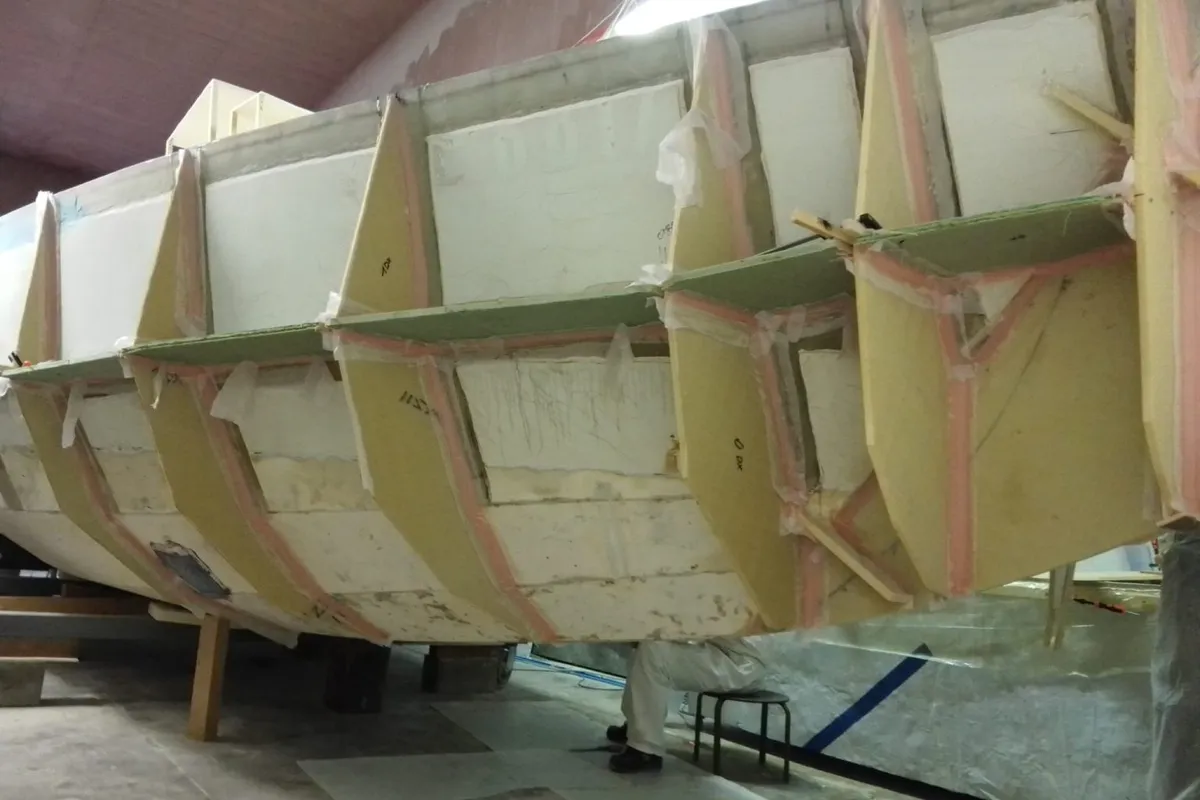By Margherita Pelaschier
The Global Solo Challenge has an innovative format: a few essential principles encourage virtuous use of resources and prioritise the re-use of existing boats and resources.
The rules establish a maximum amount of fossil fuel that each participant can carry on their circumavigation to encourage alternative energy sources such as wind, solar, and hydroelectric.
The use of existing boats adapted for the event is recommended and favored by a handicap system designed for the Global Solo Challenge, thus promoting re-use rather than the construction of new boats.
Patrick Phelipon, a French navigator, designer, and builder, has chosen this virtuous path and tells us how he is modifying his boat to comply with the rules and be ready for a solo circumnavigation by the three Great Capes.
Safety and reliability are certainly the top priorities, and Patrick, with four circumnavigations under his belt, has devoted much of his energy to refitting his boat.
“In September 2021, I brought the boat to a shed in Italy, near Pisa, and since then I have been working continuously with a team of four people. I have already sailed the southern seas and I know how important it is to have confidence in the solidity and reliability of the boat.”
Phelipon chose an 11-meter boat that he had designed between 1981 and 1984 for an owner who wanted a boat to sail around the Mediterranean. He had built the hull, structures, and deck in his shipyard near Cesena, based on the RINA regulations.
“This boat has had three owners, but it always came back to me. So I decided to use it for my big project of circumnavigating the world solo. While planning the refit, thanks to the experiences I’ve gained throughout my life, I looked for solutions that revolutionised the initial design. I changed the appearance, and I also decided to change the name (with the necessary superstition rituals!) and the boat will return to the sea with the name Effraie 2, in memory of my first design, the famous Mini Tonner with which I won the first edition of the Mini Ton World Championship in La Rochelle.”
The boat was initially inspected to eliminate outdated parts and check the integrity load-bearing structures.
“First, I removed the keel and rudder to carefully check the condition of the hull and deck, which fortunately turned out to be very sound for the age of the boat.”
Then, in order to comply with GSC regulations, I removed all the remaining interior partitions and furnishings that showed signs of aging. I replaced them with new composite partitions designed to become watertight bulkheads. So, there will be six watertight bulkheads, three of which have watertight doors.
Then we moved on to making the structural modifications that changed the initial appearance of the Effraie 2 to prepare it for the circumnavigation.
“I consulted with Paolo Cori, a designer with a lot of experience in “planing” boats, and considered my experience of sailing downwind in the ocean to make some structural modifications. After evaluation of the shape of the hull, which as a sharp bow inclined at 45 degrees with little volume, we decided to straighten it by adding volume forward to facilitate the boat’s planing and avoid dangerous nose dives.
To harmonise the volumes between bow and stern, we also decided to modify the aft lines of the hull. Once we received the new design of the waterlines, I planned how to make these shape modifications. In collaboration with Luca Olivari’s studio, one of the leading experts in recreational boat structures who’s been in activity for 40 years, we decided to proceed with the application of vertical and horizontal frames outside the original hull and then cover them with sandwich panels, designed according to current ABS regulations.
This way, we will obtain a series of “watertight compartments” outside the original hull, which will serve as buoyancy volumes and mitigate risks associated with collision with floating objects providing the safety of a double hull construction.
“The original stainless steel box keel filled with lead, which has sailed throughout the Mediterranean for over 30 years, still seemed sound but, no longer deemed appropriate. I decided to replace the keel with a new one with a blade that starts from under the mast on deck and reaches down to the hull, passing through a “box” with an opening shaped with the profile of the keel that comes above the waterline. This solution has already been implemented many years ago on boats designed by Paolo Cori and has provided maximum safety and solidity over time.”
“As for the rigging, it will be completely new: new mast and rigging. The shrouds will be replaced with new pieces.”
Phelipon has taken care of every smallest detail in the refit of his boat to avoid the dangers associated with sailing in the Southern Oceans.
“The start of the GSC will be from A Coruña in September. In the last two years, attacks by killer whales have been recorded that have damaged various sailboats’ rudders along the Spanish and Portuguese coasts. To avoid this problem, I have installed two lifting rudders on the stern, as is done today on Class 40s. This will allow me to stop the boat lift the rudders hopefully making the boat less interesting for orcas that come to play and explore.”
The first sea trials are scheduled for spring. “The goal is to launch the boat and get the boat measured for an IRC certificate that will define our departure date, which I estimate to be around September 23rd.”
Image: Effraie-side ©Patrick Phelipon
Achieving the dream: Click here for more on the Global Solo Challenge
